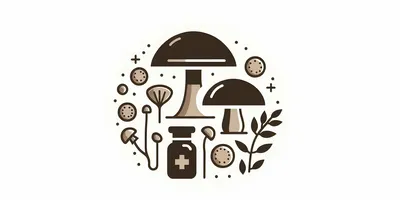Red cracking bolete Benefits (Xerocomus chrysenteron)
Red cracking bolete (Xerocomus chrysenteron) is an edible mushroom and medicinal mushroom.

Rich in Antioxidants
The Red cracking bolete is a natural source of antioxidants, which play a crucial role in maintaining health and protecting the body’s cells from damage caused by free radicals. The powerful antioxidant properties of this mushroom are attributed to its bioactive compounds, including a variety of phenolic acids, sugars, and fatty acids.
Research has demonstrated the remarkable capability of the Red cracking bolete to combat oxidative stress. According to the study titled "Phenolic, polysaccharidic, and lipidic fractions of mushrooms from northeastern Portugal: chemical compounds with antioxidant properties," this mushroom is especially rich in phenolic acids such as protocatechuic, p-hydroxybenzoic, p-coumaric, and cinnamic acids. Furthermore, the presence of essential sugars like ramnose, xylose, and glucose, along with fatty acids like linoleic and stearic acids, contribute to its significant antioxidant effects. The study found that the Red cracking bolete exhibits strong antioxidant activities, with abilities to scavenge free radicals, showcase reducing properties, and inhibit lipid peroxidation particularly in brain homogenates. These actions suggest that the Red cracking bolete could be an important natural source for antioxidants with potential neuroprotective benefits.Learn more about the study.
Furthermore, the mushroom's content of tocopherols, specifically β- and γ-tocopherols, adds to its antioxidant profile, reinforcing its capability to serve as a valuable natural agent against oxidative stress and related health issues. By incorporating Red cracking bolete into one's diet, it may offer a way to harness these beneficial properties for better health and protection against oxidative damage.
Learn about mushrooms with antioxidant benefits.

Supports Brain Health
Rich in natural antioxidants, the Red cracking bolete holds promise for supporting brain health. Bioactive compounds, such as phenolic acids, are abundant in this mushroom and are critical for their antioxidant properties. Phenolic acids like protocatechuic, p-hydroxybenzoic, p-coumaric, and cinnamic acids are known to play a significant role in safeguarding the brain's structure and function.
Furthermore, the Red cracking bolete is composed of a variety of sugars and fatty acids that contribute to its health benefits. Sugars such as ramnose, xylose, fucose, and fructose, alongside fatty acids like linoleic and stearic acids, work together with phenolic compounds to strengthen the body's defense against oxidative stress. This effect is particularly beneficial to the brain, where oxidative stress is a known pathogenic factor in the development of neurodegenerative diseases.
The presence of tocopherols, including β- and γ-tocopherols, in the Red cracking bolete also enchants its profile of neuroprotective agents. By scavenging free radicals and inhibiting lipid peroxidation in brain homogenates, these tocopherols contribute to a reduced risk of oxidative damage in brain cells. Recent studies suggest that the Red cracking bolete's antioxidant activities could play an important role in maintaining cognitive function and possibly preventing or slowing the progression of age-related neurodegenerative conditions.
Learn about mushrooms with brain health benefits.